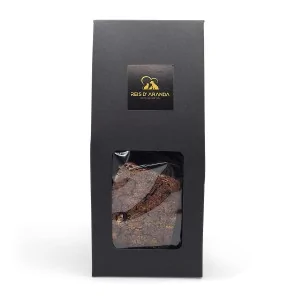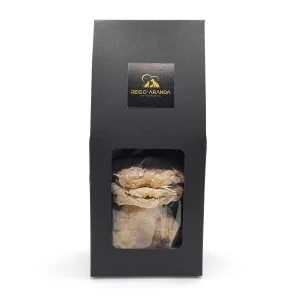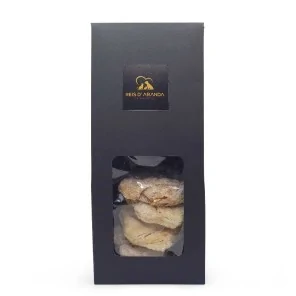The Tornjak originated from genetically homogeneous, almost extinct, indigenous shepherd dogs. These dogs have...
WHY SHOULDN'T MY DOG PLAY WITH STONES?
INTRODUCTION
Although it is still a widespread habit, a stone is not a suitable ‘toy’ for a dog. Sometimes we are in the park and in order to make our dog run and entertain himself, we throw him something we have at hand: stones or sticks. The dog can very easily get used to this routine, which can be extremely dangerous for his health.
WHY DOES MY DOG PLAY WITH STONES?
Out of habit, as habit is usually the main cause of this behaviour: puppies like to nibble and play with any object they find in the street such as sticks, stones or branches, and many owners believe that the game of throwing the stone for the dog to fetch it is not dangerous for their pet. Moreover, it is a type of play that can become ‘obsessive’ for the dog.
CONSEQUENCES OF LETTING MY DOG PLAY WITH STONES
The consequences of letting our dog play with stones are as follows:
INTESTINAL OBSTRUCTION: Intestinal obstruction in dogs occurs when a foreign body or object blocks your pet's intestine, preventing normal digestive transit in his body. This can cause serious health problems for your dog such as haemorrhages, necrosis of the intestine, septicaemia and perforations, so it is necessary to take him urgently to your trusted veterinarian. The most likely causes of intestinal obstructions are: stones, pieces of ball, pieces of food or things too big to digest, bezoars (hairballs, food...), post-surgery scars and colon cancer.
MOUTH AND DIGESTIVE INFECTIONS: We do not know what a stone has on its surface or what it has been in contact with: faeces, urine, parasites, micro-organisms, pesticides.... So oral or digestive infections are frequent.
TEARS: The stones are not all smooth, smooth and soft pebbles but many have very sharp edges and splinters that can cause cuts or tears in the mucous membranes of the mouth, tongue, gums or throat. Tears that are not only complex and annoying to heal as it is a delicate area in constant friction and humidity, but can also be an open door for many microorganisms.
DENTAL FRACTURES AND LOSSES: Dental fractures are very common in dogs that play with or eat stones. Dogs' teeth and jaws are very strong and resistant (much more so than those of humans) but there is a limit to what they can do and they are not made to break stones or have constant contact with them. In the event that our dog breaks a tooth, not only will he suffer great pain but we will be forced to remove it with the consequent veterinary expense, in the worst cases it can be accompanied by a broken gum or cracking of the jaw.
ASPHIXIA: If the stone (or even the ball) he is playing with is too small for our dog it can slide down his tongue and end up obstructing his throat, which translates into a mortal danger for our dog in which we will have to act extremely quickly to remove it with our fingers or use physical methods to help him to expel it (Heimlich manoeuvre). In the worst cases where we don't know how to do the manoeuvre or the stone is too far away to reach it, we can lose our dog.
HOW CAN I PREVENT MY DOG FROM PLAYING WITH STONES?
DON'T TEACH HIM TO PLAY WITH IT
This is the golden rule, the quickest and easiest. If he is not taught to play with them our dog will not (usually) show any interest in stones.
DISCONTINUE GAMES OF ‘TOSS AND FETCH’.
Some tutors wonder if they can't simply replace the stones with a ball and continue playing with their best friend. And the answer is: NO! At least at this early stage, when your dog's obsession is at its peak, replacing the object of the obsession (in this case, the stones) is neither sufficient nor effective in treating the cause of the obsessive behaviour.
The ultimate goal is not to make your dog forget the stones, because that would be impossible, but to work so that what is now an obsessive behaviour in relation to the game of ‘throw and catch’ can become a healthy and playful activity.
SEEK PROFESSIONAL HELP
Treating obsessive behaviour in dogs is far from simple, and most guardians do not have sufficient knowledge of the dog's genetics, organism and behaviour to conduct the treatment that their dogs need. Therefore, we recommend that you seek the help of a veterinary ethologist or canine educator with verifiable training in canine ethology, as these professionals will be able to establish the most appropriate treatment and management guidelines based on the behaviour and needs of your best friend.
CONCLUSION
Dog obsession with stones is a complex behaviour with multiple possible causes. However, with the right approach, it is possible to manage and eventually eliminate this dangerous habit. The key is to understand the cause of the obsession and work proactively to provide healthy, safe alternatives that meet your dog's instinctive and emotional needs.
Leave a comment
Log in to post comments
















